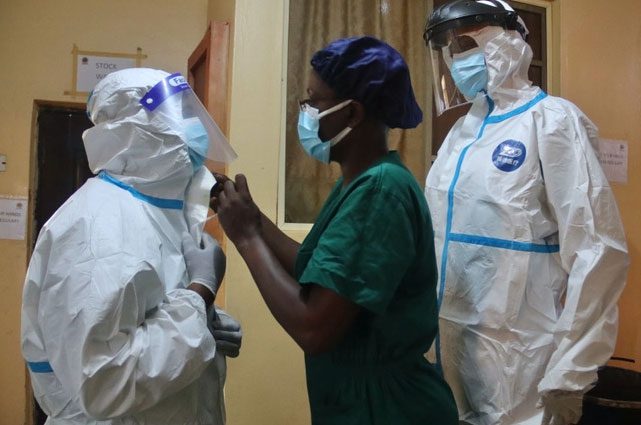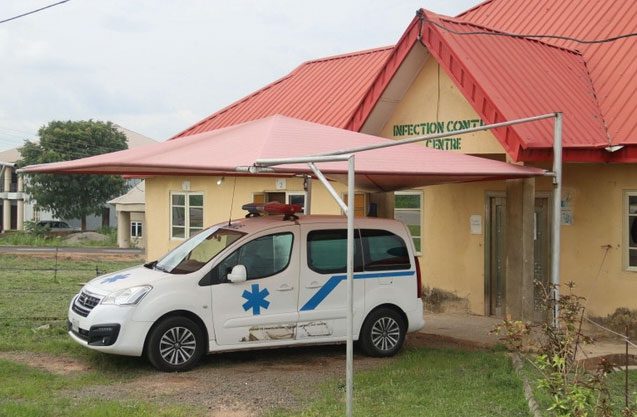When he heard the news that he was infected with the Lassa virus, Victory Ovuoreoyen thought it was the end of his life.
Victory Ovuoreoyen, a trader, could barely walk and feared for his life when he was admitted to the Federal Medical Center in Owo, Southwest Nigeria. He was suffering from fever, vomiting, and severe diarrhea.

Helping colleagues adjust protective gear in Nigeria. (Photo: Aljazeera)
However, after four days in isolation, this emaciated patient is now able to sit upright in his hospital bed. Ovuoreoyen is one of the few patients in the ward well enough to speak. “Before I fell ill, I didn’t have the strength to count my bones like this. I have lost so much weight,” he said, pointing to his protruding collarbone under a loose mustard-colored shirt.
Doctors assured the 48-year-old man that he would recover from Lassa fever, an acute hemorrhagic illness similar to Ebola. He is one of the lucky ones. Although 80% of those infected with the Lassa virus do not become seriously ill and most cases go undiagnosed, the mortality rate for patients who eventually require hospitalization is 15%, according to the World Health Organization. With an incubation period of 2 to 21 days, severe symptoms can begin to appear a week after the onset of illness. By that time, it may be too late.
Lassa fever reduces the number of platelets in the blood and impairs the ability to clot, leading to internal bleeding. Organ failure that can lead to death may occur within days.
Initial symptoms include headaches and muscle aches, sore throat, nausea, and fever. Initially, they cannot distinguish Lassa fever from the symptoms of malaria, a common illness in the region. The laboratory at the hospital in Owo is the only laboratory in the state that performs blood tests to diagnose Lassa, and results take two days. This combination of factors often leads to Lassa fever being detected at a later stage, making it harder to treat.

Entrance to a Lassa fever treatment area in Nigeria. (Photo: Aljazeera).
Owo, a hub for agricultural markets located 300km (186 miles) from Nigeria’s capital Abuja, is the epicenter of the Lassa fever outbreak that began earlier this year, resulting in over 160 deaths. At the peak in March, the 38 beds in the isolation unit were insufficient, and an additional 10 beds were added for suspected cases. In this part of Nigeria, there is a greater fear of the Lassa virus than of the SARS-CoV-2 virus. Ondo State, where Owo is located, has recorded 171 deaths from the Lassa virus since 2020, compared to 85 deaths from Covid-19, according to the Nigeria Center for Research and Control of Infectious Diseases.
Despite its widespread presence in West Africa, this disease remains largely unknown in most of the world. The virus was discovered in 1969 in the town of Lassa, Northern Nigeria, about 1,000km (621 miles) from Owo. Since then, it has become endemic in at least five West African countries. Nigeria, the most populous country in Africa, reports the highest number of cases, reaching up to 1,000 cases annually. This year alone, in January, Nigeria recorded 211 confirmed cases, with 40 patients dying.
According to the Africa Centers for Disease Control and Prevention, Lassa fever infects approximately 100,000 to 300,000 people in Africa each year, with thousands of deaths.
Infected individuals can transmit the virus to others through bodily fluids. Lassa fever often causes miscarriages, can be transmitted from mother to child, and can persist in breast milk for up to six months. Like other viral infections that cause hemorrhagic fever, which have no cure and can easily proliferate, scientists have warned that the Lassa virus could be used as a biological weapon.



















































